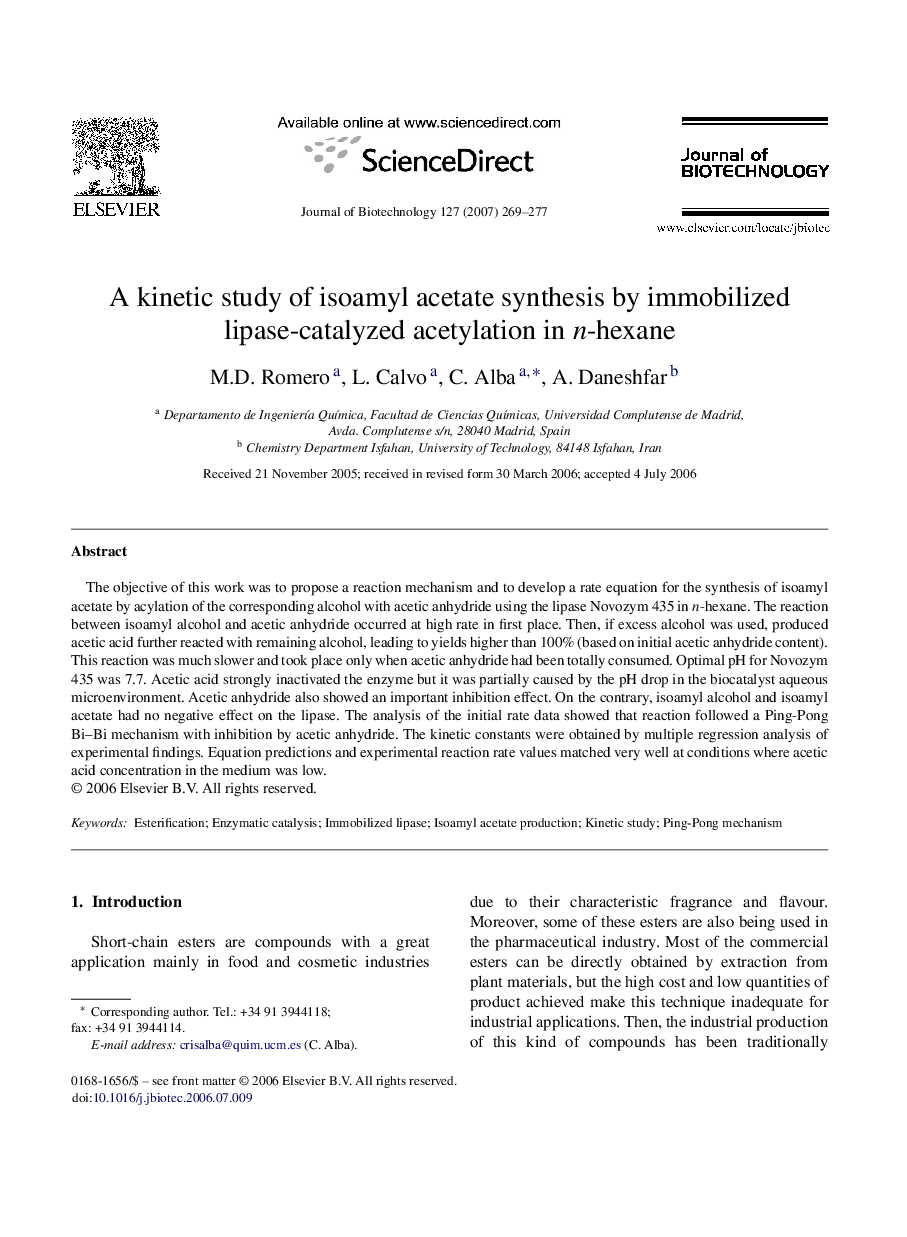| Article ID | Journal | Published Year | Pages | File Type |
|---|---|---|---|---|
| 25547 | Journal of Biotechnology | 2007 | 9 Pages |
The objective of this work was to propose a reaction mechanism and to develop a rate equation for the synthesis of isoamyl acetate by acylation of the corresponding alcohol with acetic anhydride using the lipase Novozym 435 in n-hexane. The reaction between isoamyl alcohol and acetic anhydride occurred at high rate in first place. Then, if excess alcohol was used, produced acetic acid further reacted with remaining alcohol, leading to yields higher than 100% (based on initial acetic anhydride content). This reaction was much slower and took place only when acetic anhydride had been totally consumed. Optimal pH for Novozym 435 was 7.7. Acetic acid strongly inactivated the enzyme but it was partially caused by the pH drop in the biocatalyst aqueous microenvironment. Acetic anhydride also showed an important inhibition effect. On the contrary, isoamyl alcohol and isoamyl acetate had no negative effect on the lipase. The analysis of the initial rate data showed that reaction followed a Ping-Pong Bi–Bi mechanism with inhibition by acetic anhydride. The kinetic constants were obtained by multiple regression analysis of experimental findings. Equation predictions and experimental reaction rate values matched very well at conditions where acetic acid concentration in the medium was low.
